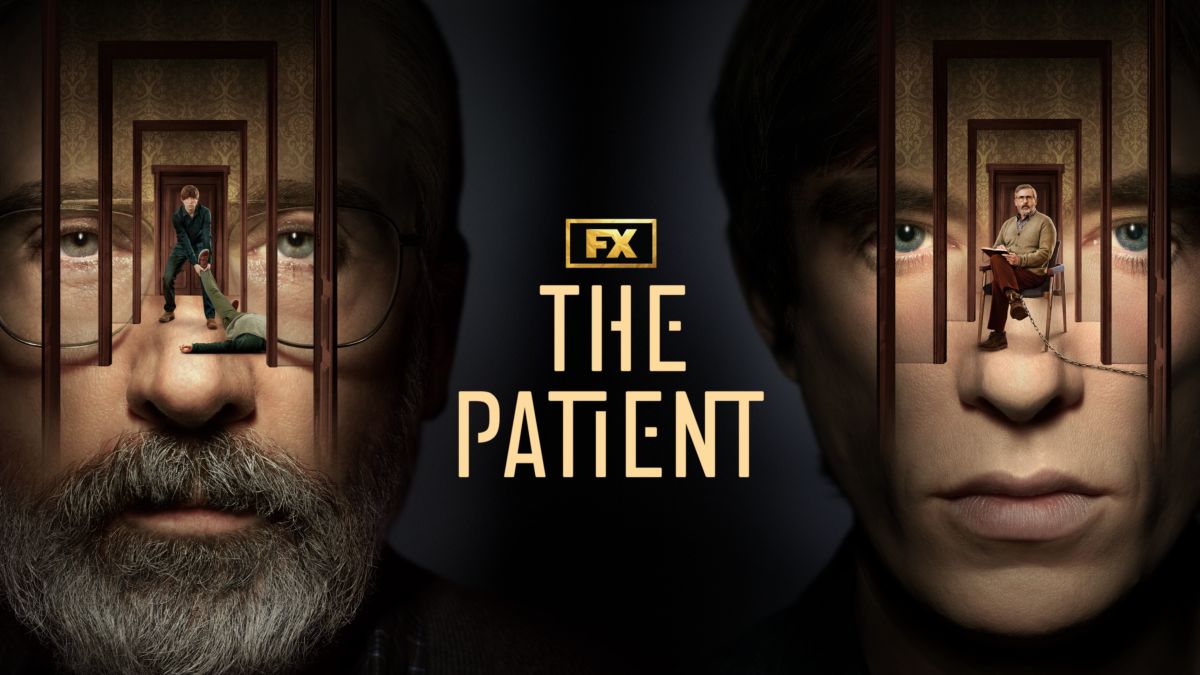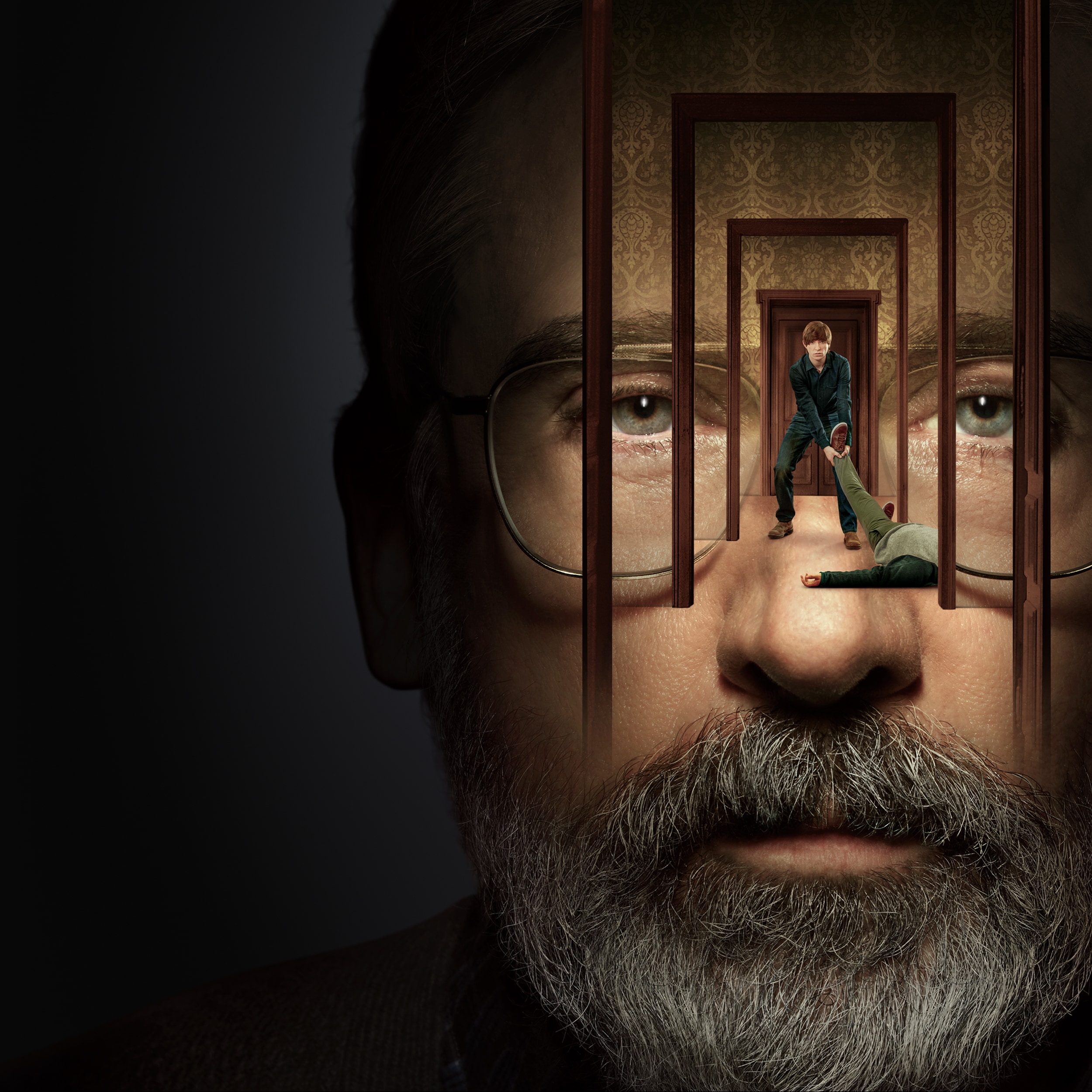

© FX Network
Choices. We all have them, but are they always correct?
As a therapist you choose the course of treatment for a patient, but what happens when the patient is the one who calls the shots? Steve Carrell (best known for playing Michael Scott in ‘The Office’) stars as Alan Strauss, who is one day kidnapped by his patient Sam.
Sam Fortner, a restaurant inspector living with his mom, is far from your average 20-something Joe. He has a compulsion to kill. Whether that be his manager at work who always keeps reassigning him for re-inspections of take-away places, or a man who looks at him the wrong way while walking down the street… one word appears in Sam’s mind: kill.
Under disguise, Sam approaches Alan for help, pretending to have anger and social issues arising from his childhood where he was physically abused by his father. Before we know it, the screen transitions to the therapist’s perspective, where he wakes up in Sam’s house with his legs chained. Throughout the show we quite literally see a series of unfortunate events. Some of which may have been avoided, others not. For example, there are countless scenes where Alan visualizes breaking a vase in the room, a diy weapon to hurt Sam, but his conscience as a therapist doesn’t allow him to follow up on this. Moreover, in one episode, Alan suggests that Sam should invite his ex-wife for dinner as a means of trying to find a purpose in life that may potentially distract him from his urges to kill. Knowing there’s a guest in the house that could potentially save Alan, he dismisses this escape opportunity, even though he ponders heavily on what he would do upon freeing himself. We are thrown into a tango of rationality and irrationality as the therapist, battling for his freedom and survival, also needs to sustain his professionality and help prevent further murders.
If you asked me to describe this psychological thriller in one word, it would certainly be desperation. Imprisoned, one by his thoughts and one physically deprived of his freedom, Sam, is desperate to get better, but his homicidal compulsions stir his decisions, while Alan is desperate to get back to his regular life. The Patient struggles with fighting his past behaviour of killing people, which is contrasted with the dilemmas and guidance discussed with Alan. In the meantime, the therapist struggles between choosing to be of help as a professional and simply being a human and surviving, even if it may mean hurting his client. In all this there’s a third character- the mother of the patient who has been aware of his behaviour the whole time but could never give up her ‘dear son’ to the police. In this tragically alluring series, the therapist battles his own demons; his marriage, relationship with his son and hallucinations.
The Patient series not only cautions you to not conduct therapy sessions at your own house, but it also tells the story of the ever-challenging balance between work and life. We can’t always predict the outcome. We make choices. Sometimes right ones, sometimes wrong ones. Maybe one wrong choice is the right one in another context. But we’re all stuck in the limbo of thinking we’re rational or irrational, when perhaps the opposite may be true.
Though you might initially be repulsed by the character of Sam, the show strikingly still manages to construct a feeling of empathy from the audience. By seeing two different realities of imprisonment, it is almost impossible to not watch the full series in one sitting.
Created by: Joel Fields & Joe Weisberg
The Patient is available on Netflix and Disney+.

© FX Network
Choices. We all have them, but are they always correct?
As a therapist you choose the course of treatment for a patient, but what happens when the patient is the one who calls the shots? Steve Carrell (best known for playing Michael Scott in ‘The Office’) stars as Alan Strauss, who is one day kidnapped by his patient Sam.
Sam Fortner, a restaurant inspector living with his mom, is far from your average 20-something Joe. He has a compulsion to kill. Whether that be his manager at work who always keeps reassigning him for re-inspections of take-away places, or a man who looks at him the wrong way while walking down the street… one word appears in Sam’s mind: kill.
Under disguise, Sam approaches Alan for help, pretending to have anger and social issues arising from his childhood where he was physically abused by his father. Before we know it, the screen transitions to the therapist’s perspective, where he wakes up in Sam’s house with his legs chained. Throughout the show we quite literally see a series of unfortunate events. Some of which may have been avoided, others not. For example, there are countless scenes where Alan visualizes breaking a vase in the room, a diy weapon to hurt Sam, but his conscience as a therapist doesn’t allow him to follow up on this. Moreover, in one episode, Alan suggests that Sam should invite his ex-wife for dinner as a means of trying to find a purpose in life that may potentially distract him from his urges to kill. Knowing there’s a guest in the house that could potentially save Alan, he dismisses this escape opportunity, even though he ponders heavily on what he would do upon freeing himself. We are thrown into a tango of rationality and irrationality as the therapist, battling for his freedom and survival, also needs to sustain his professionality and help prevent further murders.
If you asked me to describe this psychological thriller in one word, it would certainly be desperation. Imprisoned, one by his thoughts and one physically deprived of his freedom, Sam, is desperate to get better, but his homicidal compulsions stir his decisions, while Alan is desperate to get back to his regular life. The Patient struggles with fighting his past behaviour of killing people, which is contrasted with the dilemmas and guidance discussed with Alan. In the meantime, the therapist struggles between choosing to be of help as a professional and simply being a human and surviving, even if it may mean hurting his client. In all this there’s a third character- the mother of the patient who has been aware of his behaviour the whole time but could never give up her ‘dear son’ to the police. In this tragically alluring series, the therapist battles his own demons; his marriage, relationship with his son and hallucinations.
The Patient series not only cautions you to not conduct therapy sessions at your own house, but it also tells the story of the ever-challenging balance between work and life. We can’t always predict the outcome. We make choices. Sometimes right ones, sometimes wrong ones. Maybe one wrong choice is the right one in another context. But we’re all stuck in the limbo of thinking we’re rational or irrational, when perhaps the opposite may be true.
Though you might initially be repulsed by the character of Sam, the show strikingly still manages to construct a feeling of empathy from the audience. By seeing two different realities of imprisonment, it is almost impossible to not watch the full series in one sitting.
Created by: Joel Fields & Joe Weisberg
The Patient is available on Netflix and Disney+.



